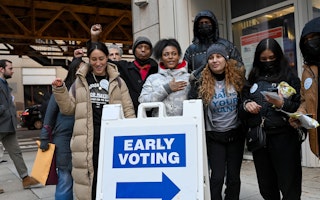What is the Color of School Closures?
By Patrick St. John

Mass school closures have sadly become a commonplace occurrence in urban school districts across the country. Unlike the occasional school closures that happen naturally due to shifting populations or new facilities, these mass closures are catastrophic blows to the communities to which those schools belong. And as U.S. Department of Education data suggests, the most recent rounds of mass closings in Chicago, New York City, and Philadelphia disproportionately hurt Black and low-income students.
To highlight these disparities, the National Opportunity to Learn Campaign released this infographic.
Beyond disparate impact, there is also no evidence to suggest that these kinds of school closures actually work the way policymakers claim. Reports have shown that the majority of students who are affected do not get placed in schools that perform any better—and in the case of Philadelphia, many students are sent to schools that perform even worse. And though closures are often touted as a way for districts to save money in tough economic times, those savings often fail to materialize and in reality cost taxpayers millions in hidden costs.
The discriminatory impact of school closures will only exacerbate the hurdles that young black men face as they chart a course through high school, college, and the workforce. Last fall, the Schott Foundation for Public Education reported that only 10 percent of Black males in the United States are deemed proficient in eighth-grade reading, and only 52 percent are graduating from high school in four years.
As Schott President John H. Jackson puts it, “These unconscionable outcomes for these young boys and men are not reflective of their potential nor their abilities—but a direct result of denying them equitable supports and resources they need to be fully engaged and succeed. This is the opportunity gap at the root of the achievement gap.”
The solution to the opportunity gap can’t be found in moving students from one under-resourced school to another. Our schools should be treated like the integral community institutions they are: strengthened, not closed. Investing in schools to provide the wraparound supports that our most disadvantaged students need—such as health, nutrition, counseling, and mentor programs—is a key step to improving academic performance and revitalizing communities.
And because the problems we face are systemic in nature, it means we’ve got to approach solutions systemically. The dreams we have for our children must be reflected in effective policies that put a positive future in reach for every student.
The Schott Foundation for Public Education is a grantee of the Open Society Foundations.
Patrick St. John is the creative & online communications director at the Schott Foundation for Public Education.


